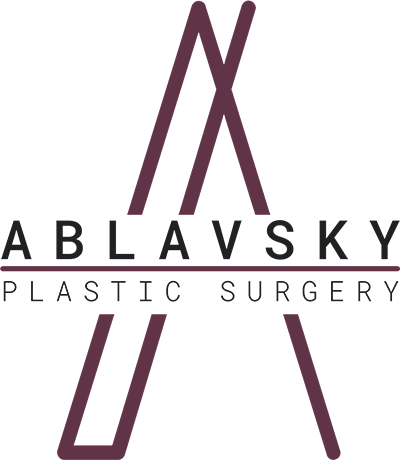Improving the size or appearance of your breasts can help you feel more feminine, confident, and empowered. The good news for breast augmentation patients is that there are a variety of breast enhancement solutions to serve your needs and goals. One innovative approach to consider is breast fat transfer, also called fat grafting. This technique helps women achieve the silhouette of their dreams without adding anything foreign to the body. However, not all women are ideal candidates for natural breast augmentation. Keep reading to discover more about the pros and cons of breast fat transfer vs implants and which technique may best align with your needs.
Fat Transfer to the Breasts
Breast fat transfer, also known as autologous fat transfer or fat grafting to the breast, is a cosmetic procedure aimed at enhancing the size and shape of the breasts using the patient’s own fat. This method provides a more natural alternative to traditional breast implants for those seeking a moderate increase in breast size and a natural look and feel. It is important to understand that fat grafting can add volume but not structure. Here’s a breakdown of the procedure:
How Does Fat Transfer to the Breasts Work?
- 1. Fat Harvesting: The process begins with liposuction to remove fat from other parts of the body where excess fat is available, such as the abdomen, thighs, or hips. This step not only provides the fat needed for the breast augmentation but also contours the areas where fat is removed, offering dual benefits.
- 2. Processing of Fat: Once the fat is harvested, it is then processed and purified. This often involves centrifugation or filtration to separate and remove impurities, such as blood, oil, and water, leaving behind healthy fat cells for transfer.
- 3. Injection into the Breasts: The purified fat is then carefully injected into the breast area using special techniques that ensure the fat is evenly distributed. This step is meticulously planned to achieve a natural-looking increase in volume and an appealing breast shape.
Advantages
- Natural Results: Since the procedure uses the patient’s own fat, the augmented breasts have a natural look and feel. Fat transfer can also be in addition to a breast augmentation with implants to help achieve a certain look or provide better symmetry.
- Minimally Invasive: Compared to breast implants, fat transfer involves smaller incisions, reducing the risk of scarring and associated risks of breast implants.
- Dual Benefit: The need to harvest fat from other parts of the body means that patients can benefit from liposuction in areas with excess fat, leading to improved body contouring.
- Lower Risk of Allergic Reactions: Since the procedure uses the body’s own tissues, there is no risk of adverse reactions that can sometimes occur with implants.
Considerations
- Limited Size Increase: This procedure is best suited for individuals looking for a modest increase in breast size. Large volume increases are not possible with fat transfer alone.
- Variability in Results: There is a possibility that some of the transferred fat will not survive, which can lead to variability in the results. Some patients may require additional procedures to achieve their desired outcome.
- Potential for Fat Necrosis: There is a risk that some of the transferred fat cells can die, leading to fat necrosis. This can create firm areas within the breasts that may need to be addressed.
Ideal Candidates for Fat Transfer
- Individuals seeking a modest increase in breast size
- Those preferring a more natural alternative to implants
- Patients with sufficient fat reserves for harvesting
Fat Transfer Recovery and Results
Recovery from breast fat transfer is generally quicker and less painful than recovery from implant surgery, with most patients returning to normal activities within a week. Final results are visible once swelling subsides and the fat stabilizes, typically within a few months.
Breast Implants
Pros:
- Predictable Size Increase: Allows for a significant and predictable increase in breast size.
- Variety of Options: Offers various sizes, shapes, and types (saline or silicone) to achieve desired aesthetics.
- Long-lasting Results: While not permanent, implants can last for many years without the need for replacement in the absence of complications.
Cons:
- Risk of Complications: Includes capsular contracture (hardening of tissue around the implant), implant rupture, and the need for revision surgery.
- More Noticeable Scarring: Requires larger incisions, which can result in more noticeable scarring than fat transfer.
- Regular Monitoring Required: Especially for silicone implants, to detect silent ruptures using MRI or ultrasound.
- May Affect Breastfeeding and Mammograms: Implants can potentially interfere with breastfeeding and the quality of mammograms, although techniques are adjusted for women with implants.
Decision Factors
- Desired Outcome: Consider whether you’re looking for a moderate, natural enhancement or a significant increase in size.
- Risk Tolerance: Weigh the potential risks and complications of each procedure against your desired outcome.
- Recovery Time and Process: Fat transfer generally has a shorter recovery time compared to implants.
- Long-term Considerations: Think about long-term maintenance, such as the possibility of needing revision surgeries with implants.
Combining Fat Transfer to the Breasts with Breast Implants
Combining fat transfer with breast implants is a technique some patients and surgeons choose to achieve a more customized and natural-looking result in breast augmentation. This combined approach leverages the benefits of both procedures to enhance the breast size significantly with implants, while using fat grafting to refine the shape, symmetry, and feel of the breasts. Here’s a deeper look into this combined procedure:
How It Works
- Initial Placement of Implants: The procedure typically begins with the surgical insertion of breast implants, which are chosen based on the desired increase in size and the patient’s body proportions. Implants can provide the primary structure and volume.
- Fat Transfer: Following or simultaneously with the implant surgery, fat is harvested from the patient’s body using liposuction, processed, and then strategically injected around the implants. The fat can be placed to smooth transitions, enhance cleavage, correct asymmetries, or add volume in specific areas where implants alone might not achieve the desired contour.
Advantages
- Enhanced Aesthetics: Combining these techniques can offer a more tailored result, creating breasts that are not only larger but also have a more natural slope and contour. The fat grafting component can help soften the edges of implants, making them less detectable.
- Improved Feel: The layer of transferred fat around the implants can make the breasts feel softer and more natural to the touch.
- Dual Benefit: Like fat transfer alone, this combined approach offers the added advantage of contouring the donor sites, providing an overall body reshaping benefit alongside breast augmentation.
- Versatility in Correction: This method can be particularly beneficial in cosmetic breast surgery for correcting asymmetry or imperfections from previous breast surgeries.
Considerations
- Complexity and Cost: The combined procedure is more complex, potentially increasing the risk of complications, recovery time, and overall cost compared to either procedure done alone.
- Risk of Fat Reabsorption: As with fat grafting alone, there’s a risk that some of the transferred fat may not survive, possibly requiring additional procedures to maintain the desired outcome.
- Suitability: Not all patients are ideal candidates for this combined approach. It requires careful assessment of the individual’s body, existing breast tissue, and fat availability for harvesting.
Schedule a Consultation with a Board-Certified Plastic Surgeon
For anyone considering this combined approach, it’s crucial to consult with a board-certified plastic surgeon experienced in both breast implants and fat grafting. The surgeon can provide a thorough evaluation and explain how the combined procedure might benefit your specific case, taking into account your body type, aesthetic goals, and any previous breast surgeries. Please call (210) 942-6672 or request a complimentary consultation online to meet with me to discuss your options for breast enhancement.


Leave a Reply